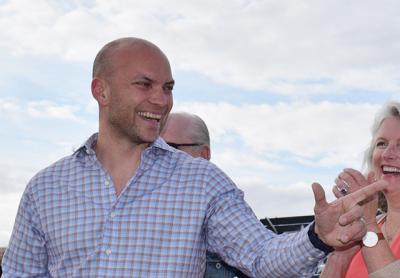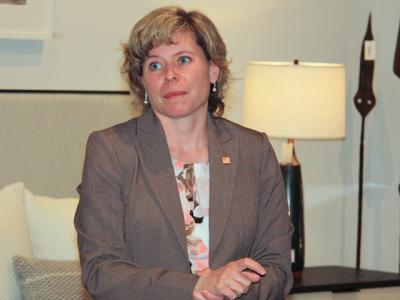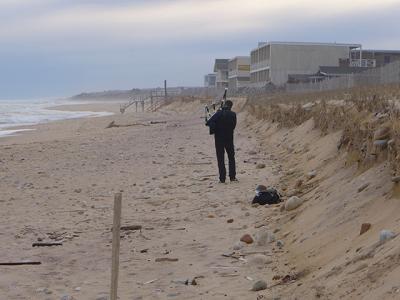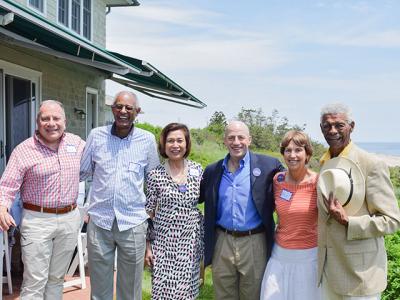Dems Pick Lys Over Gruber
Dems Pick Lys Over Gruber

The East Hampton Town Democratic Committee has selected Councilman David Lys as its candidate for the town board seat he has occupied since he was appointed to it in January.
Mr. Lys prevailed over David Gruber, the other candidate in the running, at the committee’s meeting on Friday, by 63 percent to 37 percent.
In nominating Mr. Lys, J.B. DosSantos called him “an extremely passionate, intelligent, hands-on type of person,” a leader and role model who, he said, has brought voters of all political affiliations together. Mr. Lys is the best candidate to ensure that Democrats retain all five seats on the town board, he said.
Jim MacMillan put Mr. Gruber’s name into contention, recalling the longtime political activist’s unsuccessful bid for East Hampton Town Supervisor in 2001, his chairmanship of the Democratic Committee, and his membership on the party’s campaign committee, as well as his service as a trustee and treasurer of the Hampton Day School and co-founder of the East Hampton Conservators. Mr. Gruber’s knowledge of “the complex problems confronting our community” and concern for the citizens of East Hampton was clear, Mr. MacMillan said.
When the result of the committee’s open vote was announced, the room broke into applause. Mr. Lys thanked the group for the nomination. “I am extremely honored,” he said. Calling himself “a workhorse,” he promised to work tirelessly for the committee and for the town. “I appreciate all your efforts,” he told the committee. “Please give me a chance to earn your respect, if I have not already.”
Mr. Lys, who changed his party registration from Republican to Democratic, is serving what would have been the remaining year of now-Supervisor Peter Van Scoyoc’s term as a councilman. Should he win in November, he will have to stand for election again in November 2019 if he wants to continue on the board.
Of the 28 committee members who voted on Friday, Mr. Lys won 18 and Mr. Gruber 10. One member abstained. The votes were weighted, based on the number of votes cast in the last gubernatorial election in the election district represented by the member (which is not necessarily the district in which he or she lives).
Amos Goodman, chairman of the East Hampton Town Republican Committee, said yesterday that his party has screened town board candidates but has yet to make a decision. “It’s a challenge,” he said, “because you have people who don’t make the cut, and you have people who are great candidates, but it’s almost a shame, it’s almost political malpractice to run them for a single-year term in a year that’s likely to be an unfavorable one for the party at the macro level. And you have people you really like, like David,” he said of Mr. Lys, whom he called “a very likable guy.”
A decision and an announcement will be made soon, Mr. Goodman said. “We want to do this thoughtfully and smartly. . . .We don’t want to squander resources unnecessarily, but at the same time, this year is important in terms of setting momentum as we go into next year.”



